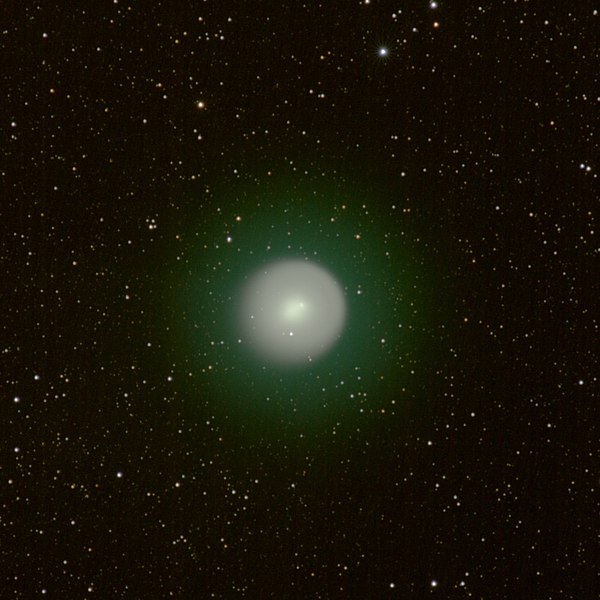The coma is the nebulous envelope around the nucleus of a comet, formed when the comet passes near the Sun in its highly elliptical orbit. As the comet warms, parts of it sublimate; this gives a comet a diffuse appearance when viewed through telescopes and distinguishes it from stars. The word coma comes from the Greek κόμη (kómē), which means "hair" and is the origin of the word comet itself.
Structure of Comet Holmes in infrared, as seen by an infrared space telescope
Comet 17P/Holmes, 2007/11/02
Tempel 1 in X-ray light by Chandra
Artificially colored far-ultraviolet image (with film) of Comet Kohoutek (Skylab, 1973)
The nucleus is the solid, central part of a comet, formerly termed a dirty snowball or an icy dirtball. A cometary nucleus is composed of rock, dust, and frozen gases. When heated by the Sun, the gases sublime and produce an atmosphere surrounding the nucleus known as the coma. The force exerted on the coma by the Sun's radiation pressure and solar wind cause an enormous tail to form, which points away from the Sun. A typical comet nucleus has an albedo of 0.04. This is blacker than coal, and may be caused by a covering of dust.
The nucleus of Comet Tempel 1.
The Helix Nebula has a cometary Oort cloud
Tempel 1 and Hartley 2 compared
C/2006 W3 (Chistensen) – emitting carbon gas








